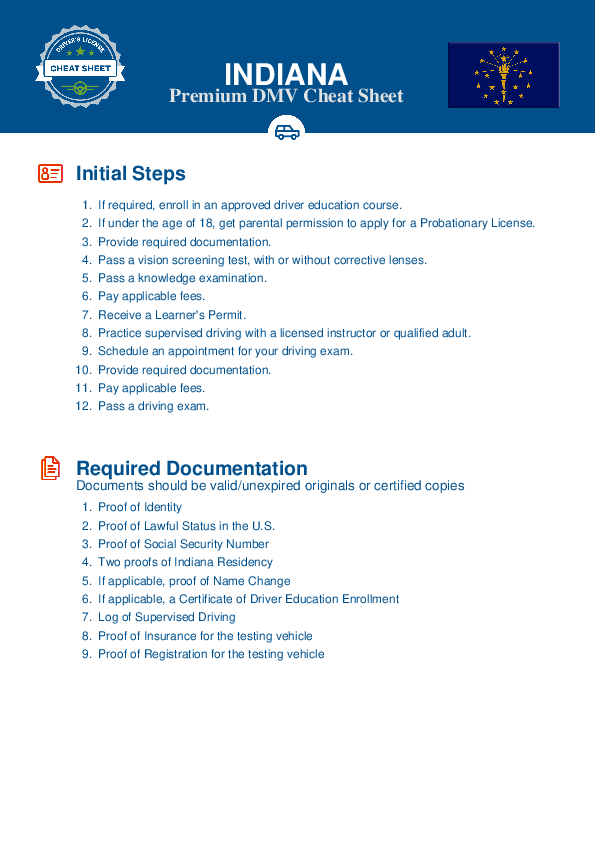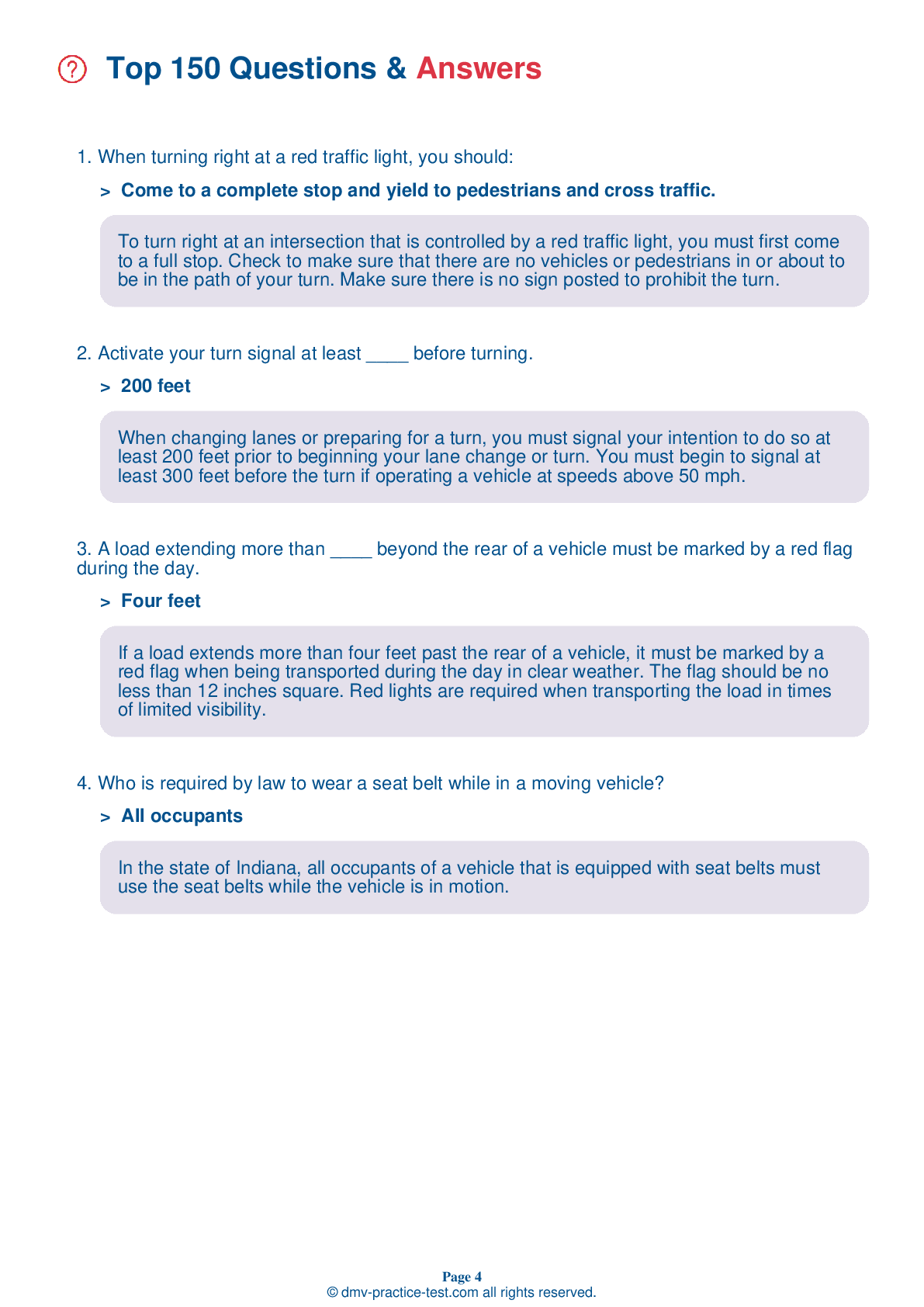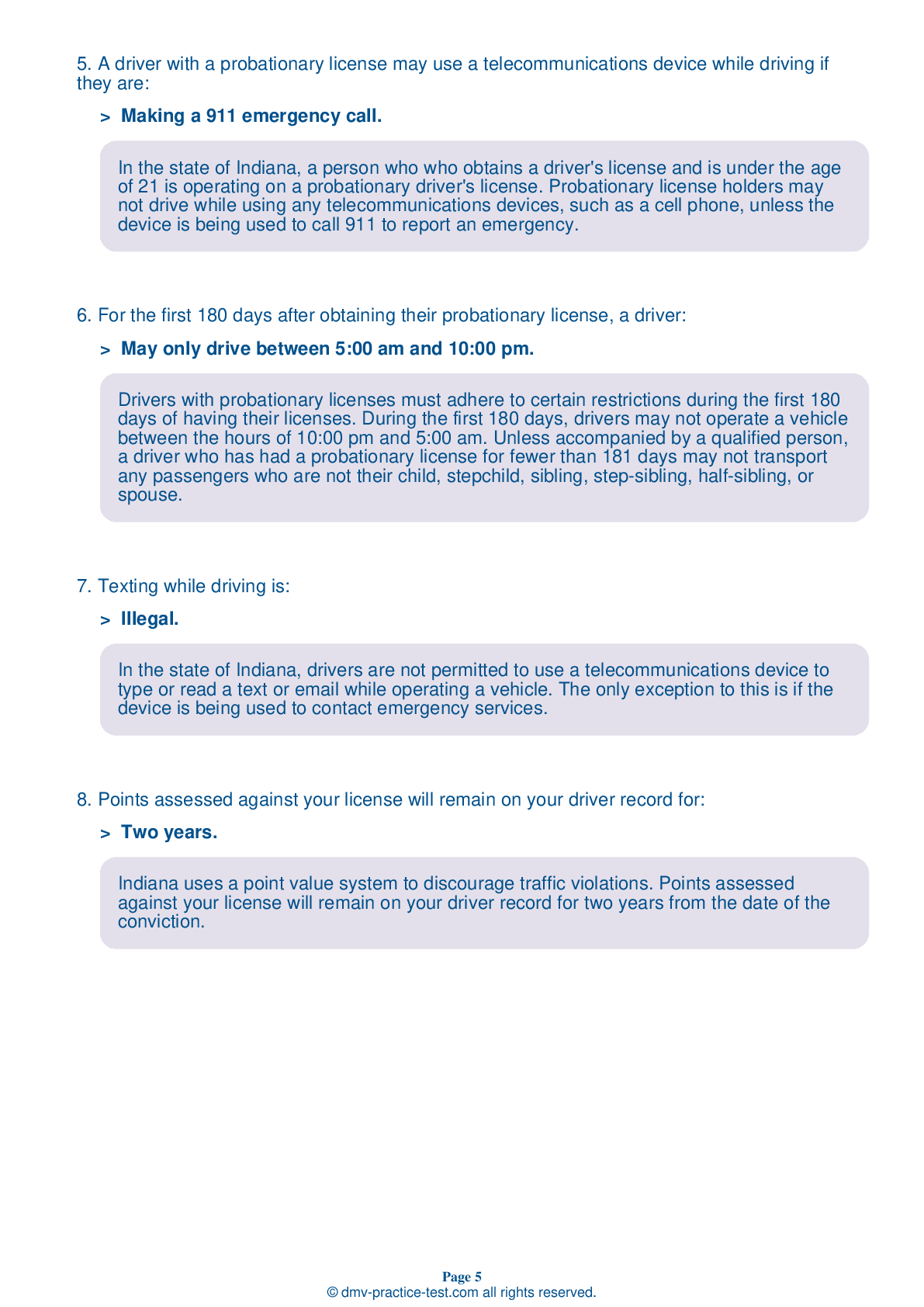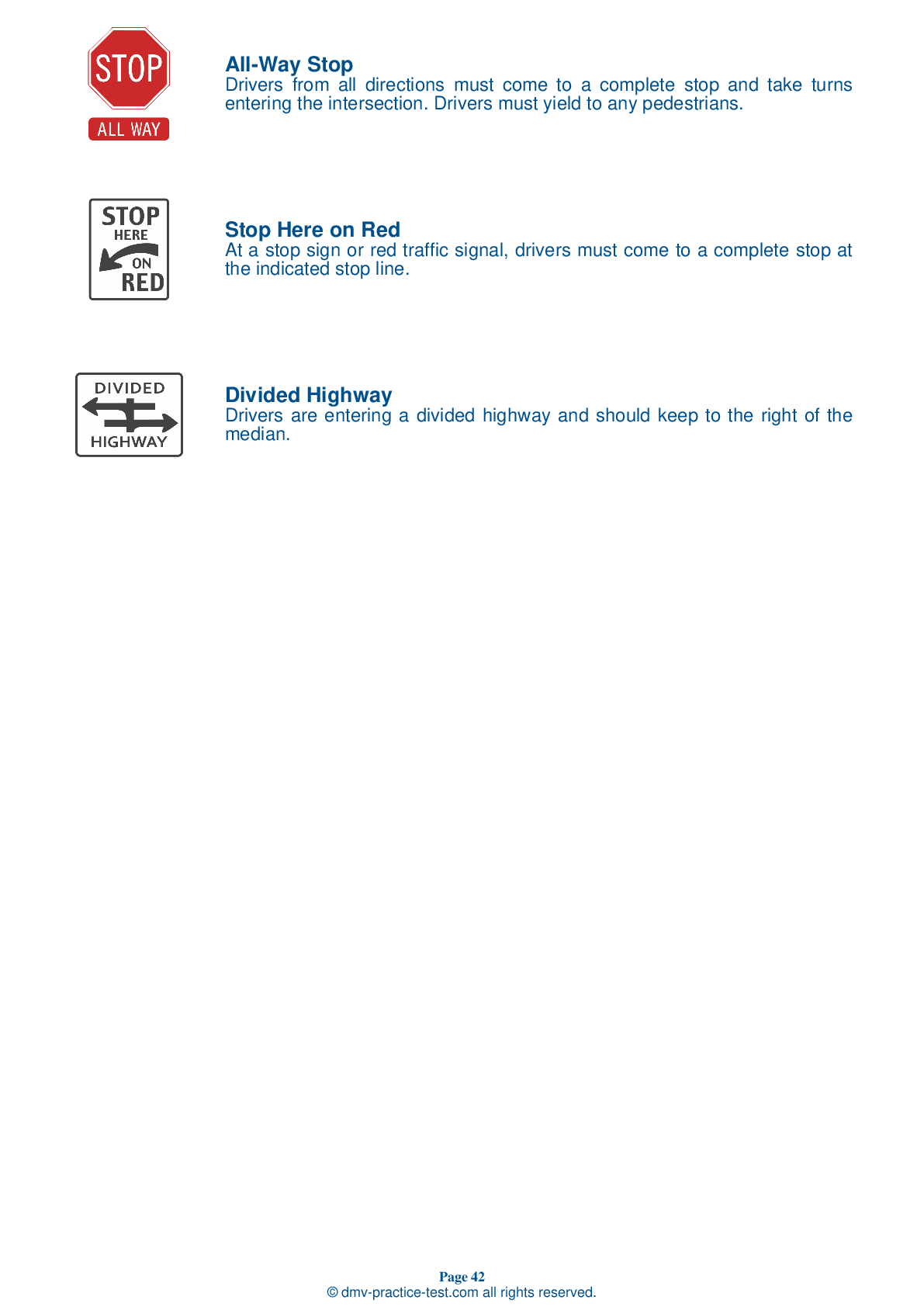FREE Indiana DMV Practice Test #22 Page 5 of 5
This set of Indiana DMV practise tests has been updated for January 2025. It includes questions based on the Indiana Driver Handbook's most significant traffic signals and laws for 2025. Use actual questions that are very similar (often identical!) to the DMV driving permit test and driver's licence exam to study for the DMV driving permit test and driver's licence exam.
On the practise exam, each question gets a tip and explanation to help you remember the concepts. The written component of the official Indiana DMV test will include questions about traffic rules, traffic signs, and driving statutes, as well as information from the Driver Handbook.
To obtain a passing grade, you must correctly answer 44 of the 50 questions. Take our DMV practise exam to help you prepare for your Indiana instruction permit or driver's licence.
The DMV exam is available in several languages.
Using any kind of testing assistance will result in an automatic fail, and the DMV may take additional action against your driver's licence, so stay away from it.
39 . Seat belts are most effective when they are worn by:
When you drive, make sure each person in your vehicle wears a seat belt. In the event of a crash, a person without a seat belt becomes a flying object and a danger to each person in the vehicle.
40 . When approaching a flashing yellow light, drivers should:
A flashing yellow light warns of a hazard. Slow down and proceed with caution.
41 . This sign means:
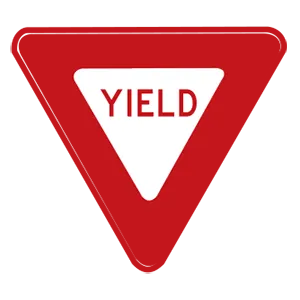
Traffic signs with three sides of equal length warn drivers to slow down when approaching an intersection and to be prepared to come to a complete stop to yield to other drivers or pedestrians. Drivers may proceed when it is safe to do so.
42 . The act of turning your head and checking your blind spot before changing lanes, driving away from a curb, or merging your vehicle into traffic is:
When changing lanes, it is important to check your blind spots. Do this by looking over your shoulder toward the next lane. Do not rely only on your mirrors.
43 . Roads become very slippery:
Pavement can become very slippery within the first 10 to 15 minutes of a rainstorm because the rain causes oil in the asphalt to rise to the surface of the road. This problem becomes even worse in hot weather. The heat combined with the water causes more oil to rise to the road surface.
44 . Downward-facing triangular signs:
Downward-facing triangular signs usually indicate that drivers should yield. Once the road is clear of traffic or pedestrians and it is safe to do so, drivers may proceed.
45 . If involved in an accident, a driver should:
If you are involved in an accident, you must stop at or near the scene. Move your vehicle out of the way of traffic, if possible. Do not stand or walk in traffic lanes as you could be struck by another vehicle. Turn off the ignitions of wrecked vehicles.
46 . You are driving along a street and hear a siren. You cannot immediately see the emergency vehicle. You should:
If you hear a siren or an air horn close by but do not know exactly where the emergency vehicle is, safely pull over to the right side of the road and stop until you are sure it is not headed toward you.
47 . What is the only way to reduce your blood alcohol concentration (BAC)?
The only method that effectively reduces your BAC is to not drink alcohol for a period of time. Coffee, exercise, and cold showers cannot reduce your BAC or change the effects of alcohol. They can help you remain awake, but they cannot change your BAC or make you sober.
48 . Railroad crossings should always be considered:
Railroad crossings are always dangerous. Drivers should always look and listen for trains approaching from either direction on all railroad tracks. Always follow the directions indicated by signs, signals, and flaggers. Never proceed past a railroad crossing until you are certain it is safe to do so.
49 . To pass a slower-moving vehicle on a two-lane, two-way road, you must:
Passing on a two-lane, two-way road requires good judgment because you must use the lane belonging to oncoming traffic to complete your pass. Only pass if you may safely and legally do so.
50 . You are involved in an accident and your vehicle is blocking traffic. You should:
After a minor collision, move your vehicle off the traveled portion of the roadway, if possible. Do not leave the scene of an accident without identifying yourself and rendering assistance.
Need Car Insurance? No problem!
Compare the best rates in Indiana and find a personalized policy that meets your needs.
1. Are You Currently insured ?
2. Married ?
3. Do you own your Home?
4. Do you have more than 1 car ?
5. Have you or a Family Member Honorably Served in U.S. Military ?
6. Your Name
7. Age
8. Zip code
IMPORTANT REMINDER:Auto Insurance is Mandatory to drive in Indiana. Get covered before you hit the road to avoid any fines.
Ranked by best match
